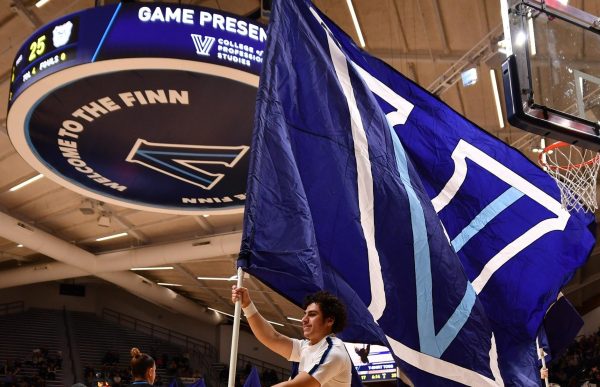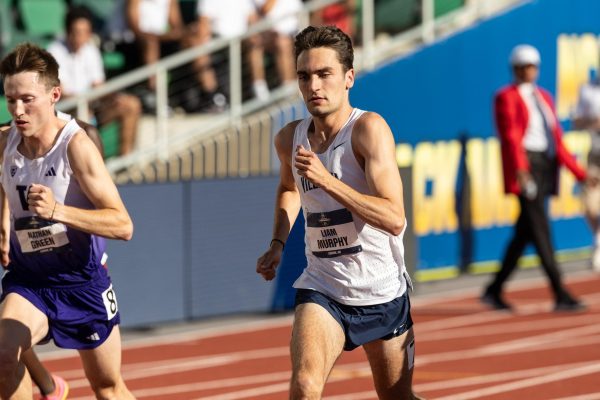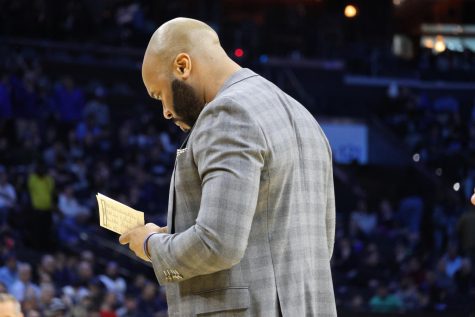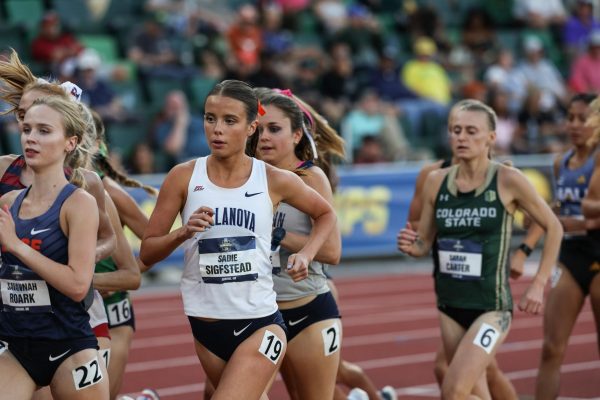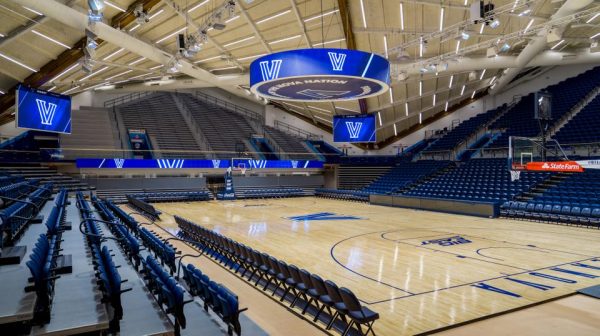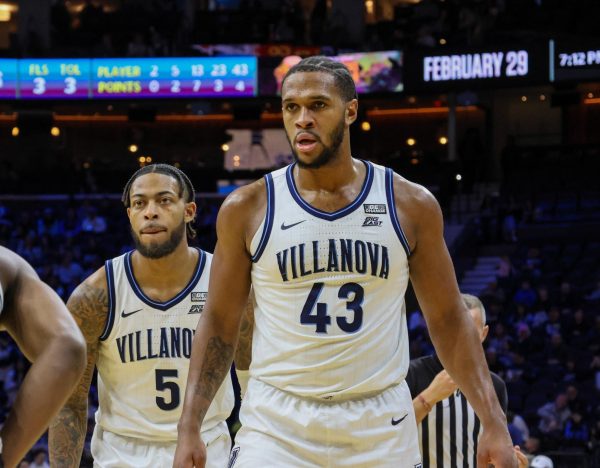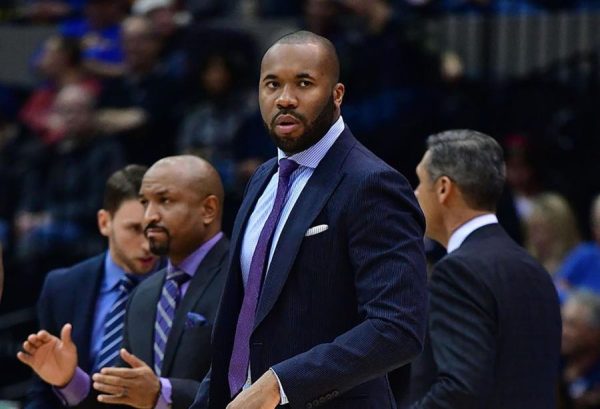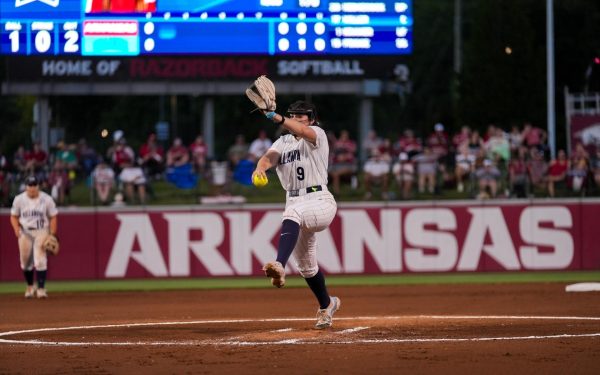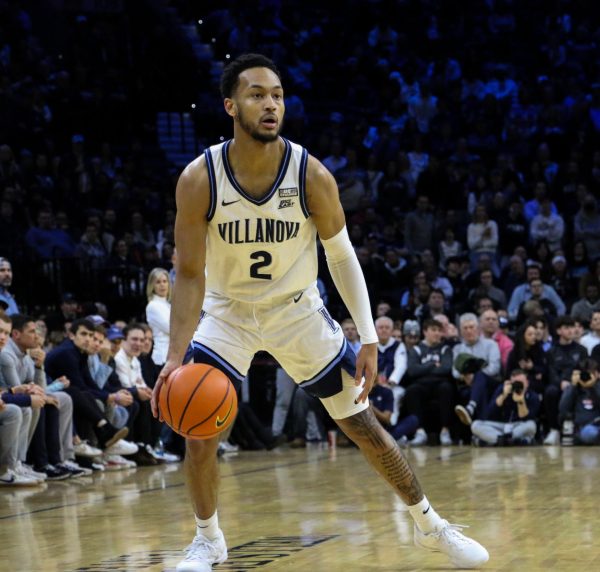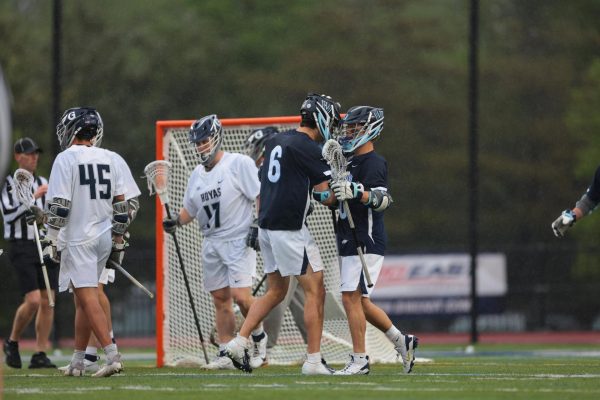FROM RAGS TO RICHES: Talley lifts Villanova football program after four-year hiatus
December 9, 2009
It was 2 a.m. when the phone rang. Joan McGuckin, groggy from awaking unexpectedly from a deep sleep, felt for the phone as the ringing continued to scream through the still darkness of the early morning. Phone calls at this hour were not unusual for the secretary of Villanova University’s Football Office, but those calls generally came during the season. This was April, and the football team just began spring practices. Unwanted calls weren’t supposed to start for another few months.
“Hello?” McGuckin stuttered into the receiver.
As the man on the other end, who McGuckin had recognized as Head Coach Dick Bedesem, spoke in earnest, she began processing exactly what he was saying. She made out that the University’s administration had come to the decision to suspend the football program. The office was beginning to take the form of an emergency room with employees running around in desperation and phones ringing off the hook. McGuckin had apparently been one of the last on the staff to hear the news. The coach needed all hands on deck to deal with the pandemonium.
“I’ll head in now,” she remembers saying.
Although she knew what Bedesem said, McGuckin couldn’t believe what she just heard. There were never any indications of the program facing reviews by the administration. The clock read 2:30 a.m. when she shut the door to her home.
“When I finally got to the office it was like a funeral,” McGuckin says. “I remember everyone was just in shock and there were a lot of tears. In the blink of an eye, the coaches no longer had jobs and the players had nowhere to play. I had nothing to worry about because I was a staff employee, but the scene was surreal.”
As more and more information rushed in, the reality of the situation for those involved with the team began to take shape. McGuckin remembers how rival coaches, upon hearing the news, were salivating at the idea of adding displaced athletes to their own squads. She watched as coach after coach from all over the country made the trip to the Main Line to begin the makeshift recruiting opportunity.
“The coaches must have taken early flights,” McGuckin says. “I don’t know how they heard the news so quickly but they certainly jumped at the chance to take these kids away. The players were all called to the stadium for their tryouts, and the coaches looked on. They took everything. By the end of the day it seemed like everything was gone.We have no game tape from those few years because they even took that. It was like a meat market.”
Villanova University abandoned its football program on April 15, 1981. It was a Wednesday. By April 16, most of the scholarship players had accepted invitations to transfer to other colleges and universities despite Villanova offering each and every athlete the chance to continue his education on full scholarship.
Unbeknownst to everyone within the Villanova community, the administration, headed by President Rev. John Driscoll O.S.A., had put together a committee of faculty with the task of evaluating what needed to be done in order to improve the school as a whole. Football was at the top of the list.
Like many Division I universities at the time, the cost to field a competitve program was becoming unbearable. There were simply too many scholarship commitments – 90 in total – for a football team at the highest level and, without the facilities to attract a significant fanbase, there was no return on the investment. According to a New York Times report printed the day after the suspension, football had cost Villanova $315,000 in 1971. The school made it clear that it would take the right combination of dedication from the coaches in terms of complying with the university’s mission, as well as an economically sustainable program, in order to bring football back.That was right around the corner.
In his address to the university on the committee’s decision, Driscoll cited the need for a “rededication to the university’s academic mission.” He felt money would better be spent on campus wide renovations, new laboratory equipment and additional funds for academic scholarship aid.
“Everyone was up in arms,” McGuckin says. “The alumni were certainly not happy. Even the students protested. A large group came together outside Jake Nevin to protest the decision but there was nothing they could really do since the decision was made. There was nothing anyone could do.”
So after 87 years of competition, 760 consecutive games, Bowl appearances in ’61 and ’62 and no interruptions through both World War I and World War II, football had been seemingly wiped away from Villanova. There was never any public mention of reinstatement from those with the power to do so. The university was more than happy to cut its losses and move on. Villanova’s decision was seen as a business decision and nothing more. Who knew only four year’s later the lights would shine once again on Saturdays in Villanova Stadium?
McGuckin turned on the lights of her new desk. She was now a travel coordinator for the entire athletic department. But a part of her wished football would return. She missed working with the coaches and spending her time among the athletes. Despite the longings, she understood the business angle, never really allowing her hopes to get the best of her. Then in 1985 she was called to the law school where a press conference was being held. It was at this press conference that the president announced football was being reinstated under the management of a new head coach, Andy Talley.
“When I first met Coach [Talley], I was the one who had handled all of his travel arrangements,” McGuckin says. “Not that there was anything wrong with the past coaches, but I knew immediately that he was different. He did more than Xs and Os. Coach was more worried about graduating his players and really furthering the program. You had to love him.”
This wasn’t a normal coaching position for Talley, who had left his head coaching job at St. Lawrence University for the opportunity to move back home and oversee a rebuilding project. The small statured and bespectacled Talley was handed the keys to a demolished truck and asked to put the pieces back together. He understood the administration was taking a chance on him and football so he was sure he needed to win and win quickly.
“When I came in I knew the program really well,” Talley says. “I thought we could develop really quickly. The administration worked well with me since we had the same objectives. We wanted our kids to graduate; we wanted to build a relationship in the community; and, of course, we wanted to win. But it was hard.”
Talley had expressed his plan to not only field a competitve team, but to also ensure future success for the program. He was not going to settle for winning teams. He wanted championship teams and, more importantly, quality student-athletes.
“Before the program was suspended, head coaches were always coming and going,” Talley says. “There was never any league affiliation which meant there was no shared revenue coming into the school. And, most of all, they never expanded on their success. We wanted to change all that.”
The plan was set in motion. Talley brought in 25 scholarship freshmen, selling them with the idea that by coming to Villanova they could play immediately and become the heroes of a once forgotten program.
The remainder of the roster was filled with walk-ons and three seniors who elected not to transfer after the ’81 season. They played five games the first year before joining the Yankee Conference in the second year. The third season under Talley marked the school’s first full slate of games, 11 in total.
The decision to reinstate the program as a Division I-AA team was suprising to most, but the immediate success dispelled any naysayers. Talley has been with the Wildcats for 25 years now, and after postseason runs, championship caliber squads, countless professional graduates and now a trip to the semifinals, memories of the tumultuous ’81 decision have evaporated. It is only fitting that Talley has carried the ‘Cats to a No. 2 ranking in the polls this season. And unless another rug is pulled from beneath the feet of this “reborn” program, Villanova football is here to stay. Talley is one win away from taking the ‘Cats to thier first title game.
“Like any business, there has to be a working relationship between staff and management,” Talley says. “We have that here now. When I took the position, I hoped we would eventually return to Division I, but I am happy right where we are.”


